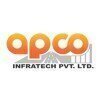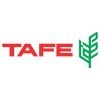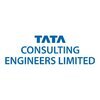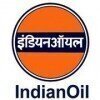Filter interviews by
Sterling Oil Exploration & Energy Co. Interview Questions and Answers
Be the first one to contribute and help others!
Interview questions from similar companies

Assistant Electrical Engineer Interview Questions & Answers
Jindal Stainlessposted on 25 Mar 2021
I applied via Campus Placement and was interviewed in Jan 2022. There were 4 interview rounds.
Interview Questionnaire
1 Question
- Q1. Technical skills.
Interview Preparation Tips

Mechanical Maintenance Engineer Interview Questions & Answers
JSW Groupposted on 4 Aug 2021
I applied via Campus Placement and was interviewed in Jul 2021. There was 1 interview round.
Interview Questionnaire
2 Questions
- Q1. In my interview asked questions related to my intresting subject
- Q2. Give your first impression
Interview Preparation Tips

Interview Questionnaire
6 Questions
- Q1. Percentage of steel in pile
- Ans.
The percentage of steel in a pile varies depending on the type and design of the pile.
The percentage of steel in a pile can range from 0% to over 90%.
The type of pile (e.g. steel, concrete, timber) and its design (e.g. diameter, length, wall thickness) determine the percentage of steel.
Steel piles typically have a higher percentage of steel than other types of piles.
The percentage of steel in a pile can also affect its
- Q2. Pile built-up above cut off level as per IS code
- Ans.
Pile built-up above cut off level as per IS code
IS code specifies the maximum allowable pile length above cut off level
Pile length above cut off level should not exceed 3 times the pile diameter
Built-up pile above cut off level can cause structural instability and failure
- Q3. Pile vertical tolerance as per IS code
- Ans.
Vertical tolerance for piles as per IS code
As per IS 2911-1:2010, the vertical tolerance for piles is +/- 25mm
This tolerance is applicable for both driven and cast-in-situ piles
The tolerance is measured at the top of the pile and at intervals of 3m along the length
If the deviation exceeds the tolerance limit, the pile may need to be rejected or remedial measures taken
- Q4. Pile concrete consumption +- tolerance
- Ans.
Pile concrete consumption tolerance depends on various factors.
Pile diameter and length
Concrete mix design
Placement method
Quality control measures
Environmental conditions
Tolerance typically ranges from 5-10% of estimated consumption
Regular monitoring and adjustment of concrete consumption is necessary
- Q5. Unit weight of steel
- Ans.
Unit weight of steel is 7850 kg/m³
The unit weight of steel is the weight of a specific volume of steel
It is measured in kilograms per cubic meter (kg/m³)
The unit weight of steel is 7850 kg/m³
This value may vary slightly depending on the composition and manufacturing process of the steel
- Q6. Contractor MB related

Territory Sales Manager Interview Questions & Answers
Tractors and Farm Equipmentposted on 12 Oct 2020
Interview Questionnaire
4 Questions
- Q1. 1)Industry of the particular Market you are working in.
- Q2. Dealer funding status,PFS,Coverage, your past work experience.
- Q3. H How to start New Dealer scouting?.
- Ans.
To start new dealer scouting, research the market, identify potential dealers, and reach out to them with a compelling pitch.
Research the market to identify potential dealers
Create a list of potential dealers and prioritize them based on their fit with your product
Reach out to potential dealers with a compelling pitch that highlights the benefits of partnering with your company
Follow up with potential dealers to build ...
- Q4. How to increase MS
- Ans.
To increase MS, focus on building strong relationships with customers, providing excellent customer service, and offering competitive pricing.
Develop a deep understanding of the market and customer needs
Offer personalized solutions and recommendations
Provide ongoing support and follow-up to ensure customer satisfaction
Regularly analyze and adjust pricing to remain competitive
Invest in marketing and advertising to incre...
Skills evaluated in this interview

Jr. Engineer - Survey Interview Questions & Answers
Hindalco Industriesposted on 19 Nov 2020
I applied via Naukri.com and was interviewed in May 2020. There were 3 interview rounds.
Interview Questionnaire
4 Questions
- Q1. How do you control your team and if you have saved your company's cost then how?
- Q2. How do you control local issues?
- Q3. How to fix true North?
- Q4. What is your stregth?
Interview Preparation Tips

Supplier Quality Assurance Interview Questions & Answers
Tata Advanced Systemsposted on 15 Mar 2020
I applied via Walk-in and was interviewed in Feb 2020. There were 4 interview rounds.
Interview Questionnaire
6 Questions
- Q1. Write the symbol of 1st Angle projection and 3rd angle projection..
- Ans.
1st Angle projection symbol is a square with a dot inside while 3rd angle projection symbol is a square with three dots outside.
1st Angle projection is commonly used in Europe and Asia while 3rd angle projection is commonly used in North America.
The symbol is used to indicate the orientation of the object being projected in relation to the viewing plane.
In 1st Angle projection, the object is placed between the viewer a...
- Q2. Difference between 2D drawing and 3D drawing...
- Ans.
2D drawings are flat representations of a part or assembly, while 3D drawings show the part or assembly in three dimensions.
2D drawings are typically used for simpler parts or assemblies
3D drawings are more complex and allow for better visualization of the part or assembly
2D drawings show only two views, while 3D drawings can show multiple views and angles
3D drawings can be used for simulations and testing
2D drawings a...
- Q3. Difference between 2 stroke and 4 stroke engine....
- Ans.
2 stroke engines have a power stroke in every revolution, while 4 stroke engines have a power stroke in every other revolution.
2 stroke engines have a simpler design and are lighter than 4 stroke engines.
4 stroke engines are more fuel efficient and emit less pollution than 2 stroke engines.
2 stroke engines are commonly used in small power tools and some motorcycles, while 4 stroke engines are used in cars, trucks, and ...
- Q4. Basic questions about the measuring instruments.. Means least count
- Q5. And litter basic questions about unit conversations.. Means mm to cm. Like..
- Q6. And if experience about ur last company work and knowledge..
Interview Preparation Tips

I applied via campus placement at Jharsuguda Engineering College, Jharsuguda and was interviewed in Sep 2019. There were 4 interview rounds.
Interview Questionnaire
3 Questions
- Q1. What is the difference between two stroke and four stroke
- Ans.
Two stroke and four stroke engines differ in their working cycles and efficiency.
Two stroke engines complete a power cycle in two strokes of the piston, while four stroke engines complete it in four strokes.
Two stroke engines have a simpler design and are lighter, but are less fuel efficient and produce more emissions.
Four stroke engines have separate intake, compression, power, and exhaust strokes, resulting in better...
- Q2. Different between diesel engine and petrol engine
- Ans.
Diesel engines and petrol engines differ in fuel type, ignition process, compression ratio, and efficiency.
Fuel type: Diesel engines use diesel fuel, while petrol engines use gasoline.
Ignition process: Diesel engines use compression ignition, while petrol engines use spark ignition.
Compression ratio: Diesel engines have higher compression ratios than petrol engines.
Efficiency: Diesel engines are generally more fuel-eff...
- Q3. What is the function of turbo charger
- Ans.
A turbocharger is a device that increases the efficiency and power output of an internal combustion engine.
A turbocharger uses exhaust gases to drive a turbine, which in turn drives a compressor to force more air into the engine.
By increasing the amount of air entering the engine, a turbocharger allows more fuel to be burned, resulting in increased power.
Turbochargers are commonly used in diesel engines and high-perfor...
Interview Preparation Tips

Program Manager - corporate Strategic Initiatives Interview Questions & Answers
S&P Globalposted on 22 Nov 2019
I applied via Naukri.com and was interviewed in May 2019. There were 3 interview rounds.
Interview Questionnaire
2 Questions
- Q1. What would you do in a situation where you are depended on others for the work to be completed?
- Q2. How will you manage if your manager is away? How important is team culture for you?
Interview Preparation Tips
I think the key is to check out the hierarchy of the people in the org that you know you are going to meet and try and answer according to what sort of an answer they might expect from you. Think from their POV. The endless line of interviews was exhausting but worth the wait.

I was interviewed in May 2019.
Interview Questionnaire
4 Questions
- Q1. Why do want to join BHEL?
- Q2. What is collective bargaining?
- Ans.
Collective bargaining is a process of negotiation between employers and employees, usually through their respective representatives, to determine the terms and conditions of employment.
It involves a group of employees bargaining with their employer for better wages, benefits, and working conditions
The process is usually facilitated by a union or other employee representative
The goal is to reach a mutually beneficial ag...
- Q3. What are some important acts related to skill development?
- Q4. Some questions related to my previous job in Tata Trusts and about my internships in Siemens and INBEF.
Interview Preparation Tips

Interview Questionnaire
16 Questions
- Q1. Bending moment diagram of a given framed structure ?
- Ans.
Bending moment diagram shows the variation of bending moment along the length of a structure.
Bending moment diagram is a graphical representation of the bending moment at any point along the length of a structure.
It is plotted with respect to the length of the structure.
The diagram helps in determining the maximum bending moment and the location of the maximum bending moment.
It is used to design the size of the structu...
- Q2. Bending Moment diagram of an indeterminate beam. And, how to find the moments at the mid span of the beam ?
- Ans.
Bending moment diagram of an indeterminate beam and how to find moments at mid span.
To draw the bending moment diagram, first determine the reactions at the supports using equilibrium equations.
Then, use the method of superposition or moment distribution to determine the bending moment at any point on the beam.
To find the moments at mid span, divide the beam into two parts and use the principle of superposition to find...
- Q3. Describe the basic moment distribution method to solve indeterminate systems ?
- Ans.
Moment distribution method is a structural analysis technique used to solve indeterminate systems by distributing moments through the structure.
The method involves calculating fixed-end moments and distributing them through the structure until convergence is achieved.
The moments are distributed based on the stiffness of the members and the relative stiffness of the joints.
The process is repeated until the moments at ea...
- Q4. Basic assumptions in Concrete Limit Design state and the method to design a beam ?
- Ans.
Basic assumptions in Concrete Limit Design and method to design a beam.
Basic assumptions include linear stress distribution, plane sections remain plane, and elastic behavior of concrete up to a certain limit.
Design a beam by determining the maximum moment capacity and ensuring that the applied moment does not exceed this capacity.
Calculate the required reinforcement area and spacing based on the maximum moment capacit...
- Q5. Working Stress Design Method for Steel Structures ?
- Ans.
Working Stress Design Method is a traditional method used for designing steel structures.
It is based on the concept of allowable stress.
The stress in the structure is limited to a certain percentage of the yield stress of the material.
The design is done by assuming a certain load and then checking if the stresses are within the allowable limits.
This method is not commonly used nowadays as it does not take into account ...
- Q6. How to design a building taking into account the earthquake loads and what are the parameters used during the procedure ?
- Ans.
Designing earthquake-resistant buildings involves considering various parameters and factors.
Determine the seismic zone of the location
Analyze the soil type and its bearing capacity
Select appropriate building materials and structural systems
Ensure proper connections and detailing of structural elements
Consider the effects of lateral loads and vibrations
Follow relevant building codes and standards
Conduct regular inspect...
- Q7. Draw a Bending Moment Diagram in a given loading case?
- Ans.
To draw a Bending Moment Diagram, determine the reactions, calculate the shear force, and integrate it to get the bending moment.
Determine the reactions at the supports
Calculate the shear force at different points along the beam
Integrate the shear force to get the bending moment
Plot the bending moment diagram with the x-axis representing the length of the beam and the y-axis representing the bending moment
The bending m...
- Q8. How will you construct a green building in Rajasthan? Give a basic outline of the steps involved?
- Ans.
Constructing a green building in Rajasthan involves careful planning, use of sustainable materials, and efficient energy systems.
Conduct a site analysis to determine the best orientation and design for the building
Use locally sourced and sustainable materials for construction
Install energy-efficient systems such as solar panels and rainwater harvesting
Incorporate green spaces and landscaping to reduce heat island effec...
- Q9. What was the thought process during the conduction of Nucleus and the main glitches during the interview? How could you have overcome those?
- Ans.
Thought process during Nucleus and overcoming glitches during interview
The thought process during Nucleus was to create a platform for students to showcase their skills and talents
The main glitches during the interview were technical issues with the platform and miscommunication with participants
To overcome these glitches, we conducted multiple trial runs and provided clear instructions to participants
We also had a ded...
- Q10. What are your hobbies?
- Ans.
I enjoy reading, hiking, and playing board games.
Reading: I love getting lost in a good book, especially science fiction and fantasy.
Hiking: I enjoy exploring new trails and being out in nature.
Board games: I like playing strategy games with friends and family, such as Settlers of Catan and Ticket to Ride.
- Q11. What was the toughest situation in your life and how did you tackle it?
- Ans.
Overcoming the loss of a loved one
The toughest situation in my life was when I lost my father unexpectedly.
I tackled it by seeking support from family and friends, and by focusing on self-care and healing.
I allowed myself to grieve and process the emotions, while also finding ways to honor my father's memory.
I joined a support group and attended therapy sessions to help me navigate through the grief.
Engaging in activit...
- Q12. Basic tests in geotechnical engineering e.g. Plate Load Test, DCPT, CPT, SPT and Terzaghi equations.
- Q13. Some questions on the intern
- Q14. What are your area of interest and asked questions in the same topic?
- Q15. Given a force in the frame structure, find the basic deflection.
- Ans.
To find basic deflection in frame structure given a force.
Calculate the stiffness of the structure
Determine the displacement of each joint
Use superposition to find the total deflection
Consider boundary conditions
Apply appropriate formulae
Example: Euler-Bernoulli beam theory
Example: Moment distribution method
- Q16. How many beams in the room are there?
- Ans.
The number of beams in the room is not specified in the question.
The question does not provide any information about the number of beams in the room.
It is impossible to answer the question without additional information.
The interviewer may be testing the candidate's ability to ask clarifying questions.
Interview Preparation Tips
Experience: One point which the panel liked was the use of Solar energy and rain harvesting for the power.
Round: Other Interview
Experience: The basic types of tests in geo-technical engineering were asked and then some follow up questions.
Round: HR Interview
Experience: Basic questions on my hobby like: . the normal heart beat for an athlete, pulse rate etc were also asked. And, it mostly revolved around the resume.
General Tips: 1. Specific marks allotted to the posture and attentiveness in the interview.
2. It would be better if you talk to the interviewer in the eye.
3. Reading speed is very important and helps a lot if you have one in the Test 2.
Skill Tips: The above two topics are very important.
Skills: Concrete Analysis, Structural Analysis
College Name: IIT- Kanpur
Tell us how to improve this page.
Interview Questions for Popular Designations
Interview Questions from Similar Companies
Sterling Oil Exploration & Energy Co. Reviews and Ratings
based on 13 reviews
Rating in categories
|
Executive
3
salaries
| ₹12.6 L/yr - ₹17.1 L/yr |
|
Junior Accountant
3
salaries
| ₹8.4 L/yr - ₹8.4 L/yr |
|
HR Trainee
3
salaries
| ₹2.5 L/yr - ₹4.5 L/yr |

Larsen & Toubro Limited

Tata Steel

S&P Global

Shapoorji Pallonji Group
- Home >
- Interviews >
- Sterling Oil Exploration & Energy Co. Interview Questions







